Contemporary Church History Quarterly
Volume 30, Number 3 (Fall 2024)
Review of Giuliana Chamedes, A Twentieth-Century Crusade: The Vatican’s Battle to Remake Christian Europe (Cambridge: Harvard University Press, 2019). ISBN 978-0-674-98342-7.
By Martin Menke, Rivier University
In this useful volume, Giuliana Chamedes describes the Catholic Church’s efforts to resist what it considered the dangerous ideologies of the modern world. She presents not only communism and National Socialism as the enemies of faith, but in the most crucial contribution of the work, she demonstrates that the Church resisted and rejected what it perceived to be American liberalism and materialism. She argues that, to oppose liberalism and especially communism, the Church made common cause with fascist regimes. She describes these efforts as a crusade, which is an unusual choice of word, laden with historical and also contradictory meaning. Using the term “crusade” to refer to the attempted conquests of the Holy Land several centuries ago is problematic. The term is more appropriate if one defines a crusade as an organized effort by the Church to regain influence on the European continent. Chamades’ interpretation of the Vatican’s efforts to combat modern ideologies ever since Leo XIII wrote Rerum Novarum as part of an organized campaign to regain political and moral influence justifies the term “crusade.” Chamades, however, goes beyond the broad term “crusade” to argue for the existence of a Catholic “International,” a term suggesting a centrally-organized, conscious effort with national and regional branches. Instead, the sources indicate an effort that might better be described as a theme or leitmotif rather than an organized campaign. Thus, while Chamades demonstrates consistent anti-communist efforts by various Vatican offices, these efforts fall short of an institutionalized and centrally organized campaign. There is no evidence of an organized or institutionalized Catholic “International.” Nonetheless, the work has some interesting points to offer.
 Chamedes summarizes the existing scholarship concerning the Church’s fight against communism and its willingness to collaborate with fascism. However, her insights about the fear of Western liberalism and materialism are novel and worth exploring further. For example, she cites Vatican archival records in which editor of the Code of Canon Law Eugenio Pacelli, future nuncio to Germany, Cardinal Secretary of State, and Pope, stated his fear that the U.S. entry into World War I was part of the campaign to secularize Europe. [2] The author argues that the Church perceived President Woodrow Wilson as determined to destroy the Church. As Chamades shows, the Church’s fear of liberalism lasted well beyond World War II. After World War I, the Church saw itself engaged in an existential struggle with liberalism, which explains its willingness to work with fascist regimes that opposed both liberalism as well as socialism.
Chamedes summarizes the existing scholarship concerning the Church’s fight against communism and its willingness to collaborate with fascism. However, her insights about the fear of Western liberalism and materialism are novel and worth exploring further. For example, she cites Vatican archival records in which editor of the Code of Canon Law Eugenio Pacelli, future nuncio to Germany, Cardinal Secretary of State, and Pope, stated his fear that the U.S. entry into World War I was part of the campaign to secularize Europe. [2] The author argues that the Church perceived President Woodrow Wilson as determined to destroy the Church. As Chamades shows, the Church’s fear of liberalism lasted well beyond World War II. After World War I, the Church saw itself engaged in an existential struggle with liberalism, which explains its willingness to work with fascist regimes that opposed both liberalism as well as socialism.
The author suggests that the papal peace plan of 1917 and the promulgation of the Code of Canon Law that same year constituted efforts to gain influence in international relations by reviving papal diplomacy. The Church sought to promote its values by integrating provisions of the new Code of Canon Law into concordats to curb the influences of socialism and liberalism. The church sought to retain legal control over marriages and education. Chamedes shows that this new papal diplomacy by concordat succeeded only when the country in question also considered such agreements advantageous. For example, the Baltic Republics and Poland believed the concordats affirmed their national sovereignty. The Church also usually conceded to the state some influence over appointing influential national church leaders. [44] When in 1925, the Vatican established a Polish metropolitan see at Vilnius, however, Lithuania broke off concordat negotiations before an authoritarian regime concluded a concordat in 1927. [62-63]
Chamedes discusses scholarly literature and sources referring to the “Catholic International” compared to the Communist International and similar organizations, but she does not fully define the term, nor does she provide evidence of a Catholic International. [6, 86] While the term “Catholic internationalism” describes the Church’s universalist claims well, the term “International,” especially when capitalized, suggests something much more formal and suggests a structure comparable to the Communist “International.” That idea suggests more centralized power over national churches than the papacy ever possessed. Also, the fascist regimes with which the Church cooperated – never unconditionally and rarely wholeheartedly – rejected internationalism, a contradiction that Chamedes does not address. In fact, in its propaganda, the National Socialist regime told a tale of secret Catholic ambitions to control the world. The closest the Church came to an open claim to world leadership was its vehement rejection of the League of Nations, another Wilsonian idea. Monsignor Giovanni Battista Montini, the future Pope Paul VI, declared the League superfluous since the Church was the one true global league. [55] With some justification, other Church officials denounced the League as a tool of the war’s victors to control international affairs.
Between the end of World War I and the early Cold War, Monsignor Eugenio Pacelli played an essential role in Vatican diplomacy, first as one of the editors of the Code of Canon Law, then as nuncio to Bavaria and Germany, then as Cardinal Secretary of State, and finally as Pope Pius XII. Chamades accurately narrates Pacelli’s turn to a fiercely anti-communist and more antisemitic position based on his experiences as nuncio in Munich during the revolutionary period 1918-1919. (80) Chamades suggests Pacelli embraced the popular notion of Judeo-Bolshevism and encouraged the Bavarian People’s Party, which had broken away from the (Catholic) German Center Party, to establish Bavaria as a base against the perils of communism [90]. Chamades stresses that Pacelli adopted this stance well before the Vatican relinquished hopes of achieving a modus operandi with the Soviet government in the later 1920s. Chamades argues that Pacelli urged his predecessor as Cardinal Secretary of State, Pietro Gasparri, to pursue an aggressive anti-communist agenda. [104]
While increasingly the Church focused on anti-communism, anti-liberalism remained a common denominator between the Church and fascist regimes. Chamades explains how Italian fascism, initially anti-clerical, changed course out of consideration that the Church was an enemy of communism. [96] Chamades emphasizes Mussolini’s early anti-liberal turn, which the anti-communist campaign later superseded. According to Chamades, the Church responded to communism and liberalism by promoting its model of an ideal civil society, organized around “Catholic Action,” a renewed attempt to tie Catholics to civic organizations arranged within a parochial, diocesan, and universal Catholic hierarchy. [112] Of all the early twentieth-century Vatican initiatives, Catholic Action was the most organized and institutional, though still largely ineffective in rallying the faithful. Catholic Action’s aims to organize all Catholics led to the Church’s first open conflict with Italian fascism, a conflict then repeated with all other authoritarian regimes.
Intending to resolve such differences, the Vatican began negotiating a concordat with fascist Italy. Pope and Duce each intended the subsequent Lateran Agreements of 1929, ostensibly concluded to resolve their conflicts, to advance their own interests, which led to continued tension. [117] Concordats were no longer measures to impose Catholic Canon Law and Catholic moral teaching on the state, but rather defensive agreements to secure existing rights. The Lateran Agreements gravely disappointed anti-fascist Catholic politicians such as Luigi Sturzo and Alcide de Gasperi. Chamades demonstrates that the financial terms of the Lateran Agreements, primarily their financial and bond payments by Italy to the Holy See, exposed the Vatican to global economic turmoil in new and devastating ways. [122] To put the Catholic social teaching of Leo XIII in Rerum Novarum in the context of the post-war world and the Great Depression, Pope Pius XI again related liberalism and socialism to one another as erroneous ideologies destined to lead the faithful astray. Discussing the aftermath of Quadragesimo Anno, Chamades again refers to a Vatican anti-communist “campaign.” The term “campaign” denotes organized and coordinated efforts. While Chamades cites the most relevant scholarly works before the establishment of the Secretariat for Atheism in the later 1930s, the argument lacks a smoking gun. She does not mention a meeting, correspondence, or institution that launched such a campaign. Yes, the Vatican’s efforts after Quadragesimo Anno no longer sought any accommodation with communist regimes, but there is no evidence of a campaign against communism. Instead, it seems as if an anti-communist Zeitgeist might be a better term than “campaign.” According to Vatican archival documents cited by Chamades, by 1931, Pope Pius XI determined that communism was the most dangerous enemy of the hour, but he did not launch an anti-communist campaign. [125] Chamades points out that Pacelli was the driving force behind the pope’s anti-communism, which by April 1932 had come to dominate the Holy See’s ideological concerns. [134] According to Chamades, a 1932 circular by Pacelli, now Cardinal Secretary of State, “proposed to launch an anticommunist campaign.” [125] Since the document is crucial to Chamades’ arguments, one wishes she had discussed it in more detail, especially regarding its consequences. What did Pacelli mean by the term “anti-communist campaign?” Again, a campaign requires organization and leadership. Did this ever come to be? Did Pacelli intend something like the creation of the Secretariat of Atheism? A later discussion of the “anti-communist campaign” provides no further explanation except to equate Catholic internationalism with the media “campaigns” of the 1930s. Missing is proof of any organized campaign. (132)
While Chamades correctly identifies anti-communism as the European hierarchy’s primary concern, she underestimates the Church’s continuing wariness of fascism, as for example with the German episcopate’s 1931 condemnation of fascism, to which she does not give sufficient attention. (138) Until the late 1920s, the Vatican had sought some accommodation with the Soviet regime and had devoted charitable aid to the regions stricken by the Russian Civil War. It is essential, however, to consider the Church’s growing anti-communism in connection with the Vatican’s increasing concern with Mussolini’s fascism and German National Socialism. Neither ideology developed in ways compatible with Catholic teaching. Furthermore, concerning the National Socialist rise to power, Chamades follows a familiar but deeply flawed argument when she claims it was an easy path from the March 1933 Enabling Act to the Concordat signed that July. All evidence, much of it available since the 1960s, proves how tortuous the negotiations were, and how the Vatican sought to gain every possible advantage. Chamades herself relies heavily on Vatican records, but not on all of them. Her use of the Vatican correspondence with papal nuncio in Berlin Cesare Orsenigo and the correspondence between Jesuit Superior General Wlodimir Ledochowski and the Vatican is beneficial. Still, she ignores other Vatican archival records relating to such processes as the Reich concordat negotiations. In particular, it would have been useful had she used the documents published by Father Ludwig Volk, SJ, and Alfons Kuppers. (Ludwig Volk, Kirchliche Akten über die Reichskonkordatsverhandlungen 1933. Mainz: Mathias-Grunewald-Verlag, 1969. Alfons Kupper, Staatliche Akten über die Reichskonkordatsverhandlungen 1933. Mainz: Mathias-Grunewald-Verlag, 1969).
While the fascist governments in Berlin and Rome violated the concordats as much as they observed them, Chamades shows that forces in the Vatican now called for a single-minded focus on anti-communism. In late 1933, Jesuit Superior General Wlodimir Ledochowski convinced Pius XI to establish a “Secretariat on Atheism.” [146] Chamades explains the considerable public relations activity of the Secretariat across Europe; one wonders how effective the Secretariat was in influencing not only members of the hierarchy but also the faithful. How much was the average Catholic aware of this centrally coordinated campaign? Furthermore, while Chamades convincingly shows the extent of the Vatican’s anti-communist “campaign” across the continent, one has to wonder how much fascist regimes desired to encourage widespread media work by the Church. Furthermore, the question again arises of how organized and centralized efforts must be to qualify as a campaign. It seems as if different Vatican offices pursued anti-communist efforts because they knew these were in line with the leitmotif of anti-communism, not because someone centrally coordinated their efforts.
While one might think that the establishment of the Secretariat marked the end of anti-fascist concerns, Chamades acknowledges that the Church in the early 1930s was preparing a new Syllabus of Errors to condemn both communism as well as fascism. The Church abandoned this thrust not only because of the opposition of Ledochowski, but also under the influence of the Popular Front victory in Spanish elections. [172-173] Alongside many scholars, Chamades criticizes the relatively weak language in the 1937 encyclical Mit Brennender Sorge and notes, in contrast, that in the anti-communist encyclical Divini Redemptoris released five days later, the Vatican pulled no punches. Following the condemnation of communism in Mexico in Firmissimam Constantiam, these three encyclicals made clear that the Church now considered communism, not totalitarianism, to be the greatest threat of the twentieth century. While much of the narrative recounted here is well known, Chamades provides a useful summary and some helpful distinctions. Her global perspective is helpful.
Once the newly elected Pius XII and those around him suppressed the draft of Pius XI’s encyclical condemning racism outright and when, a year later, World War Two broke out, the Church seemed firmly on the side of all anti-communist forces. Comparing the Church’s position in World War II to that in World War I, Chamades notes that the Church had virtually no allies in the second war and that the Vatican developed no significant diplomatic activity, an assessment surprising to any historian familiar with the Vatican during that time. Faced with Pius XII’s supposed inaction, Chamades argues an internal opposition arose within the Church. When Cardinal Pacelli became Pope Pius XII, however, the Vatican reaffirmed its centralizing and hierarchical approach to church leadership, in which there was little room for dissent. The outbreak of war, however, limited the ability to engage in any efforts to combat communism and subjected the Church to an increasingly assault by National Socialism. Both to those hoping for a pontiff more critical of fascism as well as for the Catholic leaders of newly invaded Poland, the first encyclical of Pius XII, Summi Pontificatus, proved a disappointment because it lacked a clear condemnation of the German invasion and its consequences. Those Catholics whom the Vatican’s inaction disappointed began to demand greater Catholic engagement for peace. Men like Don Luigi Sturzo, Jacques Maritain, and Henri de Lubac forcefully made their case in whatever press would publish their work. Additional efforts by Sturzo and Maritain, whom Chamades calls Catholic internationalists, to convince Pius XII to take a more active stand failed. This inspired a new type of Catholic activist, those committed to a peace based on Christian democracy.
Chamades demonstrates that Vatican attitudes shifted after the German invasion of the Soviet Union and the U.S. entry into the war. [220-222] The pope did not endorse the German invasion. Furthermore, he agreed to urge the American bishops to support the lend-lease agreement. Her discussion of the papacy’s response to the Shoah is limited to a few pages in which she notes that bishops informed the Vatican of the deportations of Jews and that the Vatican could have done far more to help Jews. On the one hand, this brevity is a wise choice, given the vast and contradictory scholarly literature on the subject. Chamades could have developed the complexity of her argument. Does she consider national socialist antisemitism an instance of concurrence between longstanding Catholic antisemitism and a modern ideology? On the other hand, given the German promotion of a “crusade against Bolshevism” and the thesis she is trying to prove, a more detailed discussion of the Catholic response to the Shoah would have been helpful. Chamades points out, that the Vatican did not welcome the public appeals for an outspoken condemnation of National Socialist atrocities. [228] Nonetheless, Catholic dissidents, as Chamades calls them, continued to speak up and began to organize to create a post-war world based on Christian principles, especially on a commitment to freedom and peace. Eventually, these would become the post-war Christian Democrats. She points out that “after the war, the papacy also agreed to work with Europe’s new Christian Democratic parties” [236] and even endorsed the United Nations, part of the Vatican’s general shift to greater cooperation and engagement with other civil society organizations. And yet, the Vatican’s new understanding of democracy was not one of total liberty but of freedom based on Catholic moral teaching. A more probing analysis of how, why, and with what consequences the war transformed the Vatican’s values would have enriched the work.
Beginning in 1945, the Vatican feared that the Western allies were too accommodating of the Soviet Union and were willing to hand over Eastern Europe. Chamades points out that, in contrast to the Church’s wartime failure to share information about atrocities in Eastern Europe, it now broadly shared all news of communist persecution of the Church and the faithful. [245] Furthermore, Pope Pius XII sought the aid of the United States to combat the growth of communist parties in Western Europe, which represented an abandonment of the Church’s interwar anti-liberal criticism of the United States. Despite these tactical changes, the Church envisioned a Europe formed of Christian states. It became suspicious of Christian Democratic movements when these, building on the wartime criticism within the Church, insisted on their independence from the Catholic hierarchy. [250] Chamades might have noted that the interwar Catholic parties also jealously guarded their independence from the Vatican. She claims that a new Christian Democratic International arose from the discussions of post-war Christian Democratic groups, but again, there was no such organization.
Chamades shows that, in the postwar era, the Vatican could not exercise the influence which it had expected in a post-war world. A brief period of goodwill towards the United States and the new Christian Democrats soon gave way to criticism and mistrust of both as too independent in the case of the Christian Democrats and too rooted in anti-Catholicism in the case of the United States. As Chamedes herself shows, the Vatican feared that Christian Democracy was insufficiently immune to communist. Also, Christian Democratic political parties and actors proved increasingly independent of the Vatican. The Vatican again became critical of the United States. [282] According to Chamedes, the resurgence of American Protestant anti-Catholicism and the break in U.S. diplomatic representation to the Vatican contributed to a revival of Vatican anti-Americanism, expressed as fears of American hegemony and materialism. This seemingly left the Vatican without political allies.
In the 1950s, new criticisms arose against the Vatican. The Church’s failure to side with anti-imperialist movements in the developing world led to further alienation. [286] Another challenge to Church authority and legitimacy arose via the accusations by journalists, scholars, and others of Church complicity with the National Socialist regime. In many ways, the 1950s marked the nadir of Church influence in Europe. Chamades argues that the Second Vatican Council represented Pope John XXIII’s recognition that the influence of the Vatican and of the broader over the faithful in private and public life was waning, and that the policies of his predecessors had led the Church to a dead-end.
Consequently, as Chamades convincingly explains, the Second Vatican Council overthrew much of what the Vatican leadership had considered self-evident about Church-state relations and about Church power and authority. She argues that the new Apostolic Constitutions, such as Lumen Gentium and Dignitatis Humanae, on the one hand, attempted to meet the expectations of many who demanded change in the post-war Church while at the same time proving unable to relinquish dogmatic claims to represent the one true path to salvation. Chamedes argues that Gaudium et Spes, the constitution explaining how Catholics and their Church should function in a modern, pluralistic society, constituted a rejection of the concordat strategy employed during the first half of the twentieth century. [301] Instead, the Second Vatican Council suggested a way forward in cooperation with other faiths and other ideologies as long as they authentically promoted human welfare.
In the conclusion, Chamedes argues that the Vatican’s policies of the 1930s sowed the seeds for the demand for reform that became vocal after 1945. The Church’s reform efforts of the 1960s came too late; too many Catholics were already heading out the door. [312] Chamades argues that Humanae Vitae accelerated the exodus. In contrast, Pope John Paul II promoted Church leaders who were critical of the Second Vatican Council and more comfortable with cold-war anti-communism. Despite this decline in Vatican authority over the faithful, Chamedes argues that the Church remains a powerful actor on the world stage thanks to its moral pulpit.
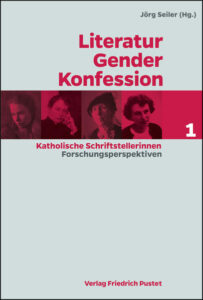 The study on Catholic women authors was funded by the Deutsche Forschungsgemeinschaft and based at the University of Erfurt. Antonia Leugers, Jörg Seiler, and Lucia Scherzberg, well-known historians of German Catholicism, as well as other church historians and several literature scholars and experts in database-supported research, collaborated on this study. Establishing a database of 160 Catholic women authors, as many as the grant permitted, the participants welcome future scholars to append additional writers, especially from earlier and later periods, to the historical record.
The study on Catholic women authors was funded by the Deutsche Forschungsgemeinschaft and based at the University of Erfurt. Antonia Leugers, Jörg Seiler, and Lucia Scherzberg, well-known historians of German Catholicism, as well as other church historians and several literature scholars and experts in database-supported research, collaborated on this study. Establishing a database of 160 Catholic women authors, as many as the grant permitted, the participants welcome future scholars to append additional writers, especially from earlier and later periods, to the historical record.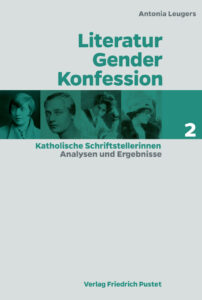 Instead, the volumes offer a wealth of case studies. Some of the authors, such as Gertrud von le Fort and Hedwig Dransfeld, were well-known, while others published only a few works. Each of the authors has their history. The Leugers volume includes a primarily quantitative summary of the women’s experiences, how many got divorced, converted to Catholicism, left the church, lived in same-sex relationships, had children out of wedlock, attempted suicide, chose cremation, were childless, etc. Leugers admits, however, that such personal information is sometimes difficult to obtain and that, given the limited sample, the data are more “symptomatic” than representative. This detailed qualitative analysis, however, lacks explanatory power. The more important questions raised in the project remain unanswered. The authors offer no conclusions about Catholic women’s emancipation, their understanding of gender, chastity, and parenthood. While some suggest disapproval of modernity, most suggest ways of accommodating it while maintaining a life of faith. In all cases, Catholic faith triumphs. Beyond this, however, this rich body of evidence cries for additional meaningful analysis. One wonders if these volumes report results from which results can be drawn.
Instead, the volumes offer a wealth of case studies. Some of the authors, such as Gertrud von le Fort and Hedwig Dransfeld, were well-known, while others published only a few works. Each of the authors has their history. The Leugers volume includes a primarily quantitative summary of the women’s experiences, how many got divorced, converted to Catholicism, left the church, lived in same-sex relationships, had children out of wedlock, attempted suicide, chose cremation, were childless, etc. Leugers admits, however, that such personal information is sometimes difficult to obtain and that, given the limited sample, the data are more “symptomatic” than representative. This detailed qualitative analysis, however, lacks explanatory power. The more important questions raised in the project remain unanswered. The authors offer no conclusions about Catholic women’s emancipation, their understanding of gender, chastity, and parenthood. While some suggest disapproval of modernity, most suggest ways of accommodating it while maintaining a life of faith. In all cases, Catholic faith triumphs. Beyond this, however, this rich body of evidence cries for additional meaningful analysis. One wonders if these volumes report results from which results can be drawn. Another instance in which women’s agency proved important can be found in Dominik Schindler’s discussion of the relationship between the Katholische Deutsche Frauenbund and Michael von Faulhaber, a theology professor at Strasbourg and bishop of Speyer. In a nuanced brief essay, Schindler argues that Faulhaber actively supported the formation of the Frauenbund and the Hildburgisbund, an organization supporting female university students. According to Schindler, Faulhaber largely adhered to traditional values, but insisted that Catholic values reflect the equal role many Catholic women played in securing the family’s income. He also argued publicly that Catholic theology proved no obstacle to women’s suffrage. While men remained heads of household, this did not consign women to second-class status. Faulhaber’s view of the family remained conservative. Still, he acknowledged that in an industrial society, a man’s wages might not suffice to meet the family’s expenses, and thus a woman might be forced to work. Faulhaber argued that women from the upper classes should be encouraged to participate in social and cultural life. In contrast, women in the lower classes deserved much support to earn an honorable living. He believed that women’s work was necessary to meet the needs of their children. Schindler argues that, even if Faulhaber’s views seem backward today, at the time, they were quite progressive.
Another instance in which women’s agency proved important can be found in Dominik Schindler’s discussion of the relationship between the Katholische Deutsche Frauenbund and Michael von Faulhaber, a theology professor at Strasbourg and bishop of Speyer. In a nuanced brief essay, Schindler argues that Faulhaber actively supported the formation of the Frauenbund and the Hildburgisbund, an organization supporting female university students. According to Schindler, Faulhaber largely adhered to traditional values, but insisted that Catholic values reflect the equal role many Catholic women played in securing the family’s income. He also argued publicly that Catholic theology proved no obstacle to women’s suffrage. While men remained heads of household, this did not consign women to second-class status. Faulhaber’s view of the family remained conservative. Still, he acknowledged that in an industrial society, a man’s wages might not suffice to meet the family’s expenses, and thus a woman might be forced to work. Faulhaber argued that women from the upper classes should be encouraged to participate in social and cultural life. In contrast, women in the lower classes deserved much support to earn an honorable living. He believed that women’s work was necessary to meet the needs of their children. Schindler argues that, even if Faulhaber’s views seem backward today, at the time, they were quite progressive.
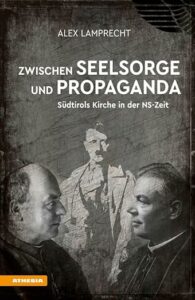 Under the terms of the Hitler-Mussolini Agreement, all those South Tyroleans who retained Austrian citizenship after 1919 were now considered citizens of the Reich. They had no choice but to resettle in post-Anschluss Germany. South Tyroleans who had become Italians in 1919 were given a choice. They could opt for Germany and be resettled as German citizens in Germany, or remain and be confirmed in their Italian citizenship. Lamprecht successfully illustrates the painful decisions that South Tyroleans, lay and clergy, had to make. As a result of effective German propaganda and Italian fascist repression, more than eighty percent of South Tyroleans opted for Germany. South Tyrolean laypeople opted for Germany primarily out of resentment of Italian fascism and Italianization policies. The clergy in the parishes, however, found the decision much more difficult. Most sought to remain in their homeland.
Under the terms of the Hitler-Mussolini Agreement, all those South Tyroleans who retained Austrian citizenship after 1919 were now considered citizens of the Reich. They had no choice but to resettle in post-Anschluss Germany. South Tyroleans who had become Italians in 1919 were given a choice. They could opt for Germany and be resettled as German citizens in Germany, or remain and be confirmed in their Italian citizenship. Lamprecht successfully illustrates the painful decisions that South Tyroleans, lay and clergy, had to make. As a result of effective German propaganda and Italian fascist repression, more than eighty percent of South Tyroleans opted for Germany. South Tyrolean laypeople opted for Germany primarily out of resentment of Italian fascism and Italianization policies. The clergy in the parishes, however, found the decision much more difficult. Most sought to remain in their homeland. Chamedes summarizes the existing scholarship concerning the Church’s fight against communism and its willingness to collaborate with fascism. However, her insights about the fear of Western liberalism and materialism are novel and worth exploring further. For example, she cites Vatican archival records in which editor of the Code of Canon Law Eugenio Pacelli, future nuncio to Germany, Cardinal Secretary of State, and Pope, stated his fear that the U.S. entry into World War I was part of the campaign to secularize Europe. [2] The author argues that the Church perceived President Woodrow Wilson as determined to destroy the Church. As Chamades shows, the Church’s fear of liberalism lasted well beyond World War II. After World War I, the Church saw itself engaged in an existential struggle with liberalism, which explains its willingness to work with fascist regimes that opposed both liberalism as well as socialism.
Chamedes summarizes the existing scholarship concerning the Church’s fight against communism and its willingness to collaborate with fascism. However, her insights about the fear of Western liberalism and materialism are novel and worth exploring further. For example, she cites Vatican archival records in which editor of the Code of Canon Law Eugenio Pacelli, future nuncio to Germany, Cardinal Secretary of State, and Pope, stated his fear that the U.S. entry into World War I was part of the campaign to secularize Europe. [2] The author argues that the Church perceived President Woodrow Wilson as determined to destroy the Church. As Chamades shows, the Church’s fear of liberalism lasted well beyond World War II. After World War I, the Church saw itself engaged in an existential struggle with liberalism, which explains its willingness to work with fascist regimes that opposed both liberalism as well as socialism.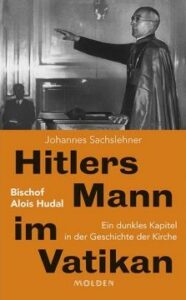 Sachslehner’s emphasis on Hudal’s early ambition, constant desire for recognition, and embarrassment over his heritage helps to explain both his career as well as his extreme commitment to German nationalism. Hudal’s contemporaries soon recognized his ambitions and accused him of sycophancy. Sachslehner suggests that this need for recognition contributed to Hudal’s völkisch and pro-National Socialist positions as well as his later commitment to a free Austria, even as he helped hunted war criminals to escape. Hudal grew up near Graz. Proving himself intelligent, he won scholarships to obtain a Catholic education, leading to his ordination in 1908 and to a doctoral degree in Old Testament Scripture in 1911. In 1914, the bishop of Graz sent Hudal to the Anima in Rome to continue his studies. Such appointments were considered a stepping stone to higher office in the Austrian church. Hudal helped to ensure that the leadership of the parish and the institute remained in Austrian hands despite German diplomatic efforts to change that. At the time, Hudal believed his only suitable further promotion was to the episcopal seat at Graz, whereas his bishop believed a university post in Graz was a sufficiently dignified position.
Sachslehner’s emphasis on Hudal’s early ambition, constant desire for recognition, and embarrassment over his heritage helps to explain both his career as well as his extreme commitment to German nationalism. Hudal’s contemporaries soon recognized his ambitions and accused him of sycophancy. Sachslehner suggests that this need for recognition contributed to Hudal’s völkisch and pro-National Socialist positions as well as his later commitment to a free Austria, even as he helped hunted war criminals to escape. Hudal grew up near Graz. Proving himself intelligent, he won scholarships to obtain a Catholic education, leading to his ordination in 1908 and to a doctoral degree in Old Testament Scripture in 1911. In 1914, the bishop of Graz sent Hudal to the Anima in Rome to continue his studies. Such appointments were considered a stepping stone to higher office in the Austrian church. Hudal helped to ensure that the leadership of the parish and the institute remained in Austrian hands despite German diplomatic efforts to change that. At the time, Hudal believed his only suitable further promotion was to the episcopal seat at Graz, whereas his bishop believed a university post in Graz was a sufficiently dignified position.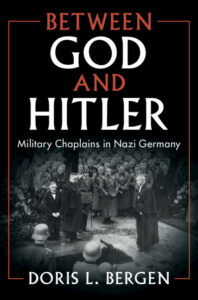 Bergen first asks what chaplains knew about the annihilation of the Jews and whether or not they sought to intervene. Working with letters individual chaplains sent to their bishops, friends, and family, official Wehrmacht reports on the chaplaincy, and more, Bergen paints an expected but devastating picture. Bergen demonstrates that the chaplains she studied were committed to their pastoral duties as they understood them. The chaplains celebrated religious services, counseled individual soldiers, and accompanied soldiers sentenced to death by a German court-martial on their final way. Before the war, Bergen shows, the chaplains continuously sought to prove their relevance to the soldiers in the field, both to prove their Germanic manliness and to prove themselves worthy of serving at the front. As Lauren Faulkner Rossi showed in her work Wehrmacht Priests: Catholicism and the War of Annihilation, the chaplains were constantly fighting efforts by the national socialist regime to curtail their activities, including the wartime decision not to replace chaplains killed or wounded in action with other chaplains and appoint Nationalsozialistische Führungsoffiziere (NSFO), national socialist leadership officers, instead. (Lauren Faulkner Rossi, Wehrmacht Priests: Catholicism and the War of Annihilation (Cambridge: Harvard University Press, 2015)). Beyond the fear of the NSFO, Bergen shows the chaplains continuously sought to prove their relevance to the soldiers in the field, both to prove their Germanic manliness and to prove themselves worthy of serving at the front.
Bergen first asks what chaplains knew about the annihilation of the Jews and whether or not they sought to intervene. Working with letters individual chaplains sent to their bishops, friends, and family, official Wehrmacht reports on the chaplaincy, and more, Bergen paints an expected but devastating picture. Bergen demonstrates that the chaplains she studied were committed to their pastoral duties as they understood them. The chaplains celebrated religious services, counseled individual soldiers, and accompanied soldiers sentenced to death by a German court-martial on their final way. Before the war, Bergen shows, the chaplains continuously sought to prove their relevance to the soldiers in the field, both to prove their Germanic manliness and to prove themselves worthy of serving at the front. As Lauren Faulkner Rossi showed in her work Wehrmacht Priests: Catholicism and the War of Annihilation, the chaplains were constantly fighting efforts by the national socialist regime to curtail their activities, including the wartime decision not to replace chaplains killed or wounded in action with other chaplains and appoint Nationalsozialistische Führungsoffiziere (NSFO), national socialist leadership officers, instead. (Lauren Faulkner Rossi, Wehrmacht Priests: Catholicism and the War of Annihilation (Cambridge: Harvard University Press, 2015)). Beyond the fear of the NSFO, Bergen shows the chaplains continuously sought to prove their relevance to the soldiers in the field, both to prove their Germanic manliness and to prove themselves worthy of serving at the front. In 2015, a movement arose to repeal Gröber’s honorary town citizenship based on impressions contemporaries had of his speeches and his supposed support for the National Socialist regime, especially in 1933-34. In response, Mühleisen offers a differentiated analysis of Gröber and avoids definite judgment where ambiguity remains. Mühleisen also avoids moral judgment, which he argues is not the purpose of this historical study. He questions whether or not one can weigh moral accomplishments against moral failings to arrive at a “bottom line” judgment. In a fairly balanced account, Mühleisen discusses several lapses in judgment by Gröber, such as his decision to join the SS “booster club.” Also, Mühleisen notes that Gröber’s early public support for the regime confused the laity. While incomprehensible today, some have described membership in this organization as a protection racket. Similarly, in the first months of the new regime, Gröber emphasized his willingness to work with the new government authorities. Possible evidence for this is the Gestapo’s fear of Gröber’s fundamental opposition to the regime.
In 2015, a movement arose to repeal Gröber’s honorary town citizenship based on impressions contemporaries had of his speeches and his supposed support for the National Socialist regime, especially in 1933-34. In response, Mühleisen offers a differentiated analysis of Gröber and avoids definite judgment where ambiguity remains. Mühleisen also avoids moral judgment, which he argues is not the purpose of this historical study. He questions whether or not one can weigh moral accomplishments against moral failings to arrive at a “bottom line” judgment. In a fairly balanced account, Mühleisen discusses several lapses in judgment by Gröber, such as his decision to join the SS “booster club.” Also, Mühleisen notes that Gröber’s early public support for the regime confused the laity. While incomprehensible today, some have described membership in this organization as a protection racket. Similarly, in the first months of the new regime, Gröber emphasized his willingness to work with the new government authorities. Possible evidence for this is the Gestapo’s fear of Gröber’s fundamental opposition to the regime.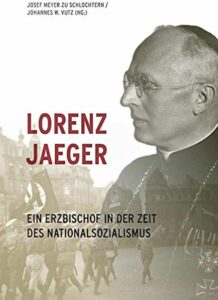 In the volume under review, the contributions of different generations of historians reflect this evolution. The subject is Cardinal Lorenz Jaeger, Archbishop of Paderborn, 1941-1973. Before becoming archbishop, Jaeger had served as a regular army officer in World War One, then entered the seminary. He served as Dortmund’s youth pastor and teacher during the inter-war period. Upon the outbreak of World War II, Jaeger immediately volunteered as a military chaplain. Both in his capacity as a teacher and as a military chaplain, he had to pass background checks by Nazi authorities. Various contributors, however, note that, during Jaeger’s episcopal ordination process, the regime’s security authorities reported fundamental misgivings about his appointment. As early as 1935, authorities noted his rejection of Alfred Rosenberg’s Mythos des zwanzigsten Jahrhunderts. The Sicherheitsdienst [SD] and regional NSDAP offices considered him a threat to the regime. At the ministerial level, both sides tried to de-escalate conflicts in the broader context of the regime’s relations with the Catholic Church, especially in episcopal ordinations. So the Reich Minister of Church Affairs, Hans Kerrl, approved Jaeger’s ordination as Archbishop of Paderborn.
In the volume under review, the contributions of different generations of historians reflect this evolution. The subject is Cardinal Lorenz Jaeger, Archbishop of Paderborn, 1941-1973. Before becoming archbishop, Jaeger had served as a regular army officer in World War One, then entered the seminary. He served as Dortmund’s youth pastor and teacher during the inter-war period. Upon the outbreak of World War II, Jaeger immediately volunteered as a military chaplain. Both in his capacity as a teacher and as a military chaplain, he had to pass background checks by Nazi authorities. Various contributors, however, note that, during Jaeger’s episcopal ordination process, the regime’s security authorities reported fundamental misgivings about his appointment. As early as 1935, authorities noted his rejection of Alfred Rosenberg’s Mythos des zwanzigsten Jahrhunderts. The Sicherheitsdienst [SD] and regional NSDAP offices considered him a threat to the regime. At the ministerial level, both sides tried to de-escalate conflicts in the broader context of the regime’s relations with the Catholic Church, especially in episcopal ordinations. So the Reich Minister of Church Affairs, Hans Kerrl, approved Jaeger’s ordination as Archbishop of Paderborn. The most important contribution of Hesemann’s work is its exhaustive collection of all evidence and arguments that portray the pope’s record in a positive light. A frequently cited problem was the vague and diplomatic language used in the pope’s statements and writings; Hesemann points to contemporary sources that clearly understood the pope’s intent. Referring to Pius’ first encyclical, Summi Pontificatus, which includes a reminder about human fraternity and about the right of the victims of war and racism to human compassion, Hesemann points to the New York Times, which reported that the pope “condemned dictators, those who break international agreements, and racism.” Furthermore, the Times reported that while such a condemnation had been expected, “only few observers had expected the condemnation to be so clear and unequivocal” (104). Hesemann’s evidence suggests that Pius was not only not silent but that readers understood his guarded speech as he intended.
The most important contribution of Hesemann’s work is its exhaustive collection of all evidence and arguments that portray the pope’s record in a positive light. A frequently cited problem was the vague and diplomatic language used in the pope’s statements and writings; Hesemann points to contemporary sources that clearly understood the pope’s intent. Referring to Pius’ first encyclical, Summi Pontificatus, which includes a reminder about human fraternity and about the right of the victims of war and racism to human compassion, Hesemann points to the New York Times, which reported that the pope “condemned dictators, those who break international agreements, and racism.” Furthermore, the Times reported that while such a condemnation had been expected, “only few observers had expected the condemnation to be so clear and unequivocal” (104). Hesemann’s evidence suggests that Pius was not only not silent but that readers understood his guarded speech as he intended.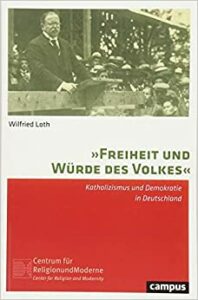 Loth argues that much relevant scholarship has rested on Rainer Lepsius’ theory of a closed Catholic milieu, largely dominated by ultramontane clergy.
Loth argues that much relevant scholarship has rested on Rainer Lepsius’ theory of a closed Catholic milieu, largely dominated by ultramontane clergy.